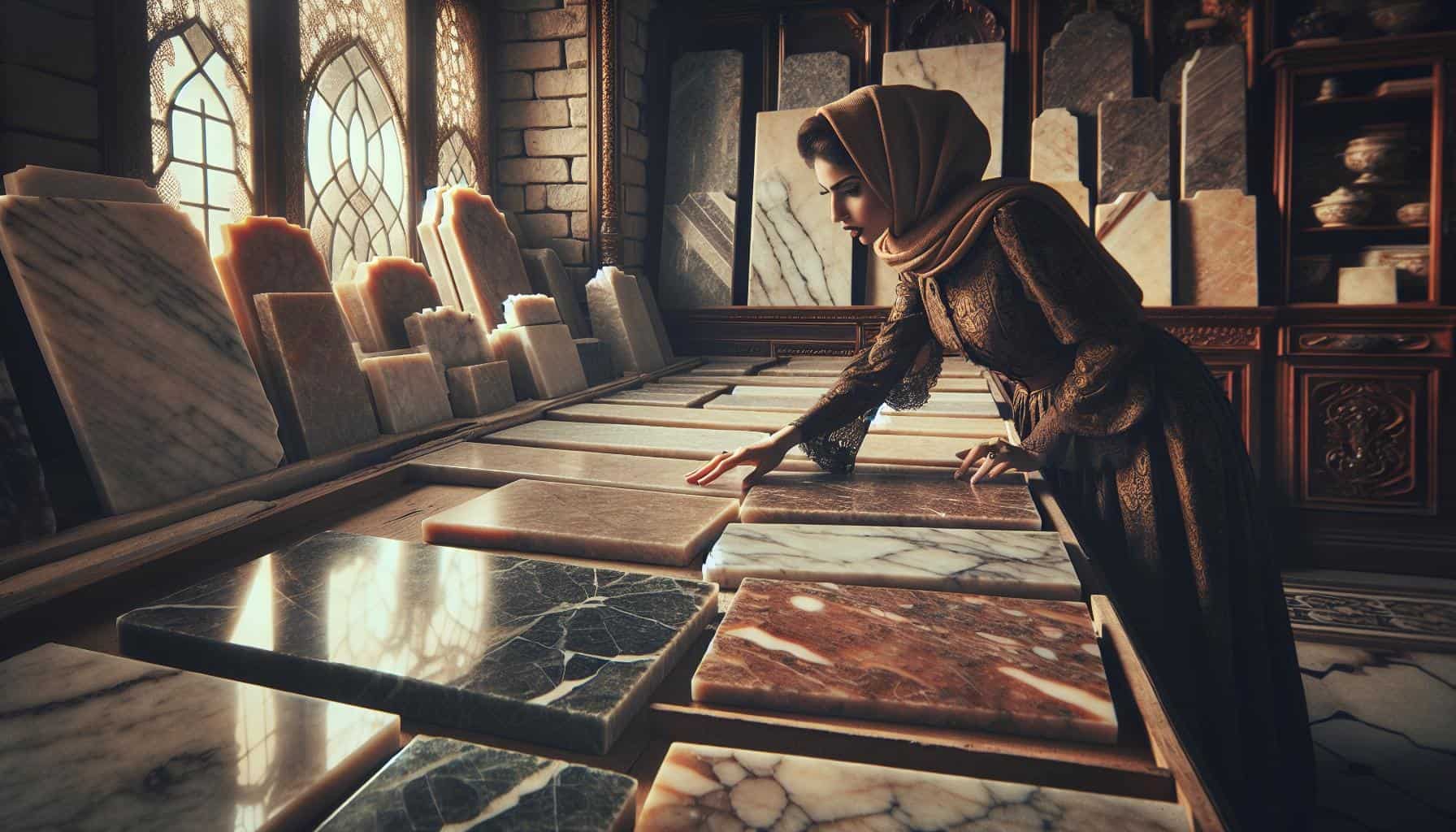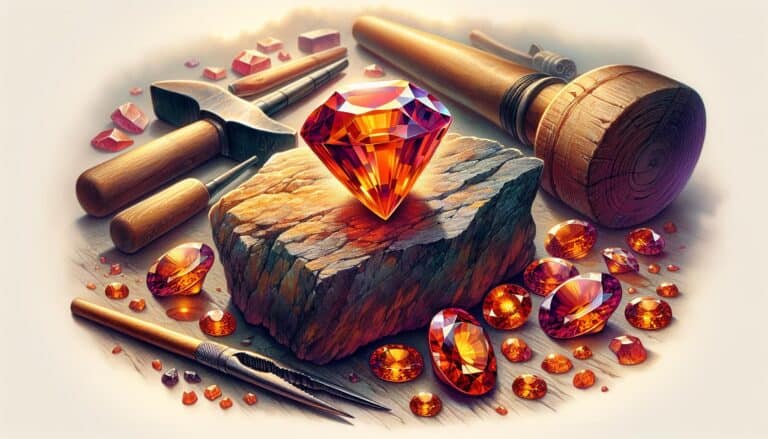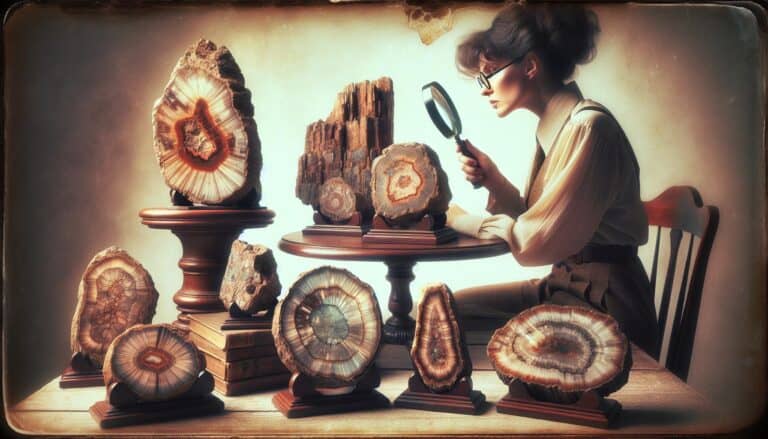Ever wondered how much marble is worth?
You’re not alone. This luxurious material has adorned the halls of power and the homes of the elite for centuries. Its value isn’t just in its beauty, but also in its durability and versatility.
Determining the worth of marble involves more than just picking out a slab at the store. You’ve got to consider factors like type, quality, finish, and origin. The price can vary widely, making your choice an important financial decision as much as a design one.
Whether you’re renovating your kitchen or sourcing materials for a grand foyer, understanding marble’s value is key.
Let’s dive into what drives the cost of marble and how you can navigate the market to find the best option for your budget and style.
Marble’s worth depends on type, quality, finish, and origin. Its value is influenced by rarity, color, and market demand. High-end varieties like Calacatta and Statuario command premium prices. For purchasing, prioritize authenticity and consider professional appraisal. Marble offers timeless elegance and durability, making it a significant investment.
What Is Marble?
Marble is a metamorphic rock that’s formed when limestone is subjected to high pressure and temperature. This transformative process, known as metamorphism, crystallizes the original carbonate mineral grains. The resulting interlocking mosaic of carbonate crystals is what gives marble its distinctive look and physical properties.
Primarily composed of calcite or dolomite, marble varies widely in color and pattern based on the minerals present during its formation. These natural variations contribute to the uniqueness of each marble piece, making it a sought-after material in construction and sculpture.
When you’re considering marble for your projects, you’re looking at a material with a rich history. The ancient Greeks and Romans prized marble for its pristine beauty, using it to create some of history’s most revered statues and buildings. Its ability to take a high polish elevates its appearance, enhancing the depth of its colors and the intricacy of its veining.
In today’s market, marble is synonymous with luxury and durability. It’s a popular choice for countertops, flooring, and other architectural elements. However, marble’s worth is not only tied to its aesthetic appeal but also to its longevity. When sealed and maintained properly, marble surfaces can last for decades, which is a key factor to consider when you’re looking at the cost versus the value over time.
Marble’s porosity requires consideration as well. While it’s a robust material, it’s also susceptible to staining and etching. Protective sealants can mitigate these issues, but understanding the care involved is essential for making an informed purchase. Knowing marble’s characteristics helps you appreciate the material beyond its beauty, ensuring that your investment is both informed and tailored to your needs.
Marble Prices: Factors That Affect Value
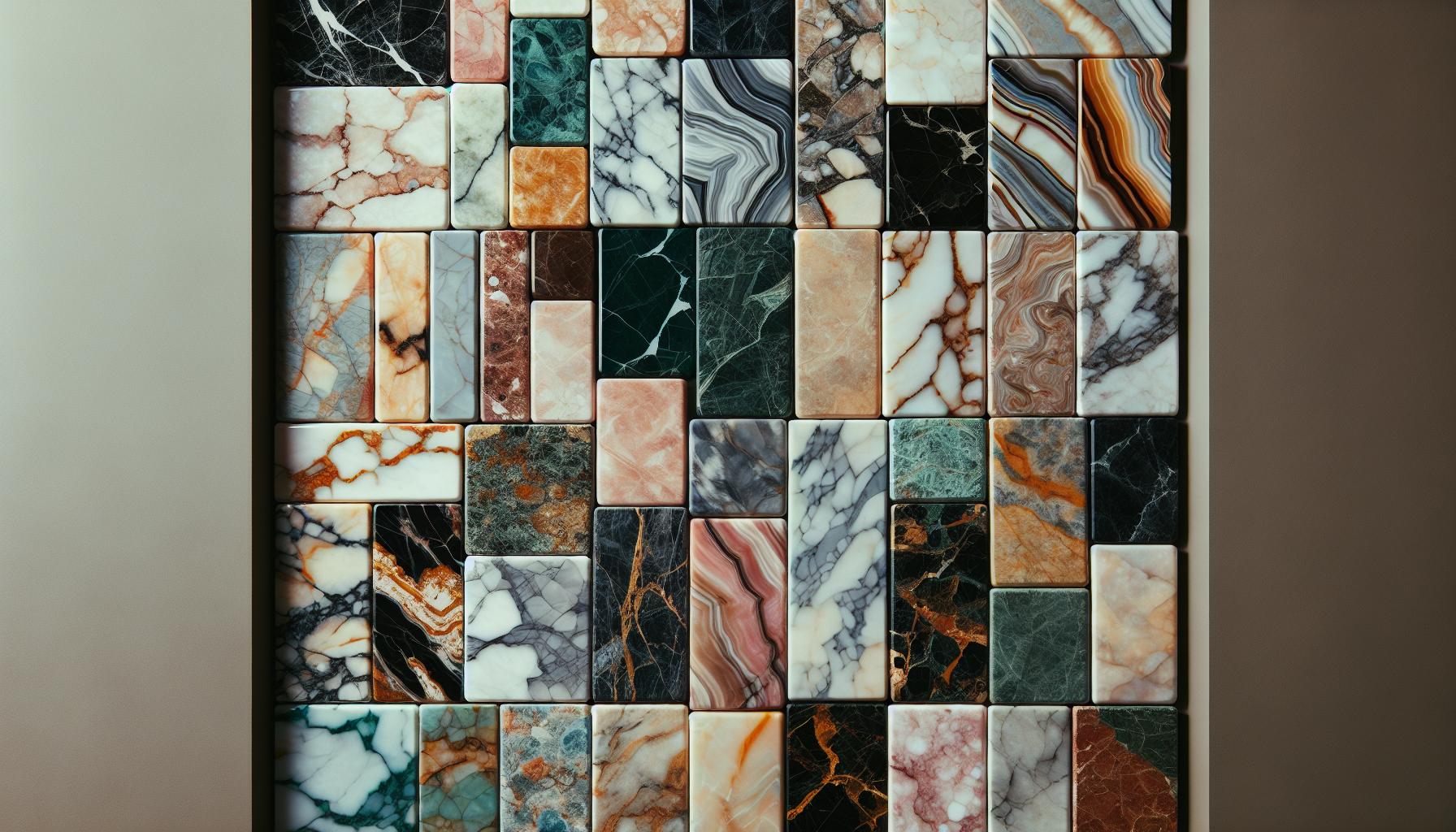
Color, Clarity, and Cut Quality
When you’re in the market for marble, you’ll quickly discover that color, clarity, and cut quality play pivotal roles in determining its value. Unique and vibrant colors, such as deep greens and rich blues, typically command higher prices due to their rarity and sought-after aesthetic. Clarity refers to the absence of impurities within the marble, which can significantly enhance its overall appearance and thus its worth.
Cut quality is another factor inherently linked to the value of marble. Precise and meticulous cuts ensure a flawless installation and display, maximizing the stone’s natural beauty. In contrast, poor cutting can result in unsightly gaps or mismatched patterns, detracting from both the appeal and the value.
Market Demand and Availability
Your understanding of marble’s value wouldn’t be complete without considering market demand and availability. Marble that’s in high demand but has limited availability naturally sells at a premium. This is due to the economic principle of supply and demand where rare items are often perceived as more valuable. Moreover, the accessibility of certain marble types can fluctuate, impacting both price and desirability.
For example, Carrara marble from Italy remains highly sought after for its quality and historic prestige. The rarer the marble variant, such as the elusive Calacatta and Statuario types, the higher the price you can expect to pay. Marble’s worth is directly influenced by these market dynamics, so it’s essential to stay informed about trends and availability when considering a purchase.
Understanding Marble: A Rare Gem
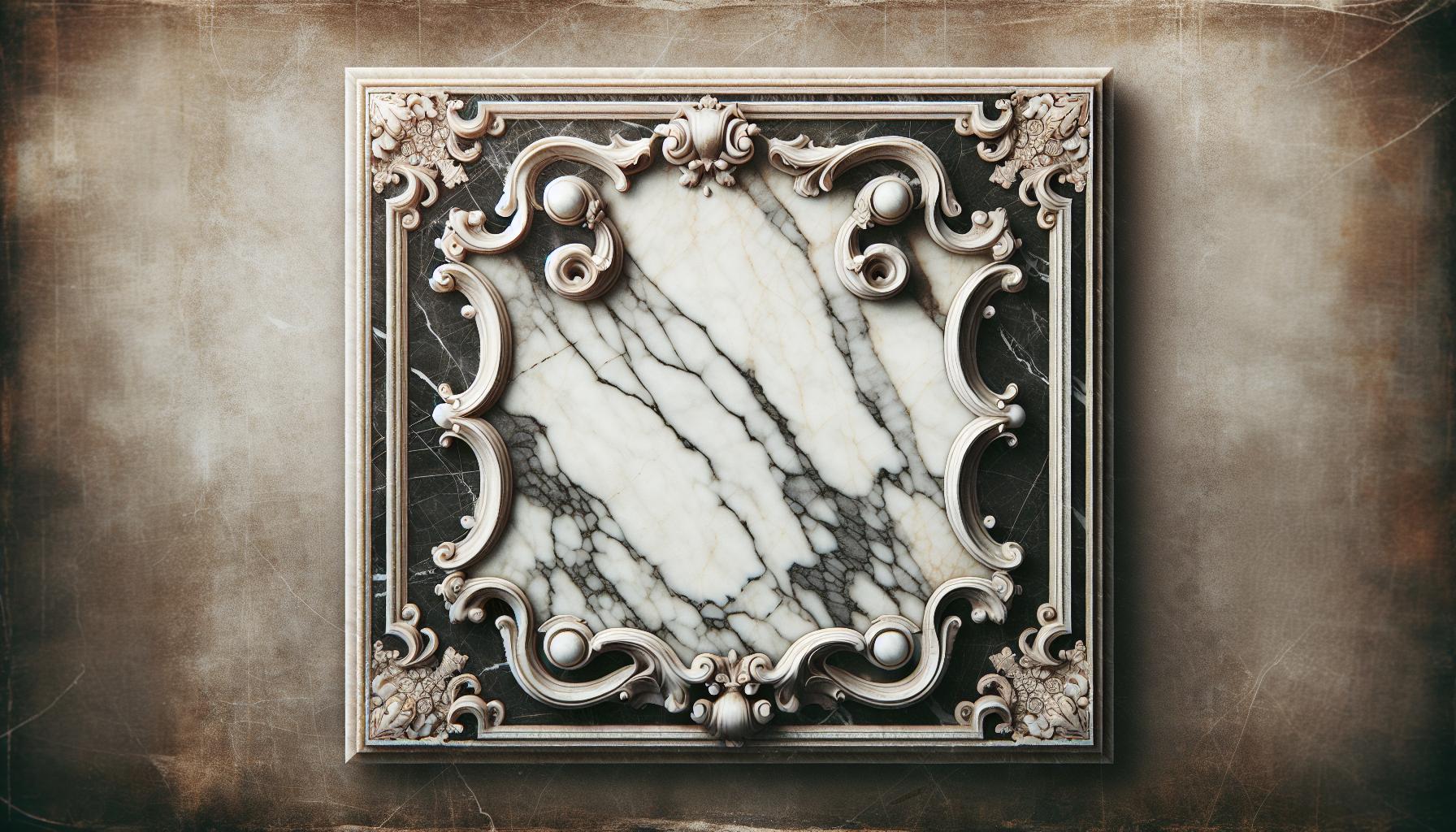
The Rarity of Marble
When you set out to invest in marble, the element of rarity often becomes a cornerstone of your decision-making process. Marble isn’t like other stones; it has a charm that’s both ancient and luxurious. Rarity adds value, and with marble, this principle holds true. The unique patterns, the years it took to form, and the very few locations around the world where high-quality marble is found contribute to its scarcity. It’s critical to understand that not all marble is created equal; the geological conditions under which marble forms significantly influence its rarity. Certain marbles have such limited deposits that they’re considered once-in-a-lifetime finds.
Origins and Characteristics
Marble is a metamorphic rock, originating from limestone that’s undergone immense pressure and heat over millions of years. Its origins are as varied as its appearance, with quarries spanning the globe – from the rolling hills of Italy to the rugged landscapes of Turkey. Each location imparts different qualities to the marble extracted:
- Italian marble, like the famed Carrara, is renowned for its high quality.
- Greek Thassos marble is sought after for its pure white color.
- Turkish marble offers a wide range of patterns and is prized in architecture and design.
The characteristics of marble go beyond mere aesthetics; they encompass durability, translucence, and the ability to hold a polish, making it a preferred material for artists and architects alike. When you’re evaluating marble, pay attention to these details. The veining, the color consistency, and the stone’s structural integrity play pivotal roles in determining its value. The finer the grains and the more intricate the patterns, the more likely you are to be looking at a high-worth piece of marble.
Remember that each slab of marble is a slice of history. Its value isn’t just in the current market but in the story it tells and the permanence it symbolizes. Differentiating between varying types of marble requires a keen eye and a wealth of knowledge – traits that you’ll develop as you delve deeper into the world of this rare gem.
Marble Grading and Valuation
The Grading System for Marble
Grading marble is much like determining the worth of diamonds—specific criteria establish its quality and value. The main factors include the origins, color, veining pattern, and finish. Typically, the industry uses a standardized grading system to categorize marble into groups A through D.
- Grade A: This is the highest quality marble. Your countertops or flooring will have uniform veining and color, few fissures or fillers.
- Grade B: This marble will have more natural marks and may require some filler material.
- Grade C: With increased irregularities in texture and complex veining, your grade C marble might need more composite materials for a smoother finish.
- Grade D: This grade has the most variations with additional faults, needing substantial resin or filler to ensure integrity.
When you’re looking at slabs for a new project, remember that a higher grade doesn’t always mean it’s the best choice for your specific design. Some may prefer the unique patterns and storytelling elements of lower grade marbles.
Certification and Appraisal
Just like in the art world, authenticity and proper valuation are crucial. Certificates for marble act as a seal of quality and authenticity, often impacting the price tag significantly. If you’re investing in marble for your home, getting a certification can reassure you of your purchase’s quality and prestige.
Appraisals, on the other hand, are comprehensive evaluations of marble’s worth conducted by professionals. Factors taken into account during an appraisal include, but are not limited to:
- Provenance: The quarry of origin and its historic value.
- Condition: Assessing any damages, wear, or repairs.
- Market trends: Current demand and popularity in the market.
For an appraisal, you’ll want to choose accredited professionals who specialize in natural stone. They provide a detailed report that can serve for insurance purposes, resale value, or simply for your personal satisfaction. Remember, certification and proper appraisal are investments that help in safeguarding the value of your marble.
Current Market Trends in Marble Pricing
As you navigate the complex marble market, it’s essential to understand the current trends which can impact pricing significantly. The demand for high-quality marble has been on an upward trajectory, driven by its timeless appeal and the desire for luxury finishes in both residential and commercial spaces.
Factors Influencing Current Marble Prices
Several factors are influencing today’s marble prices:
- Design trends: The veining and coloration that’s in vogue can affect the value of marble slabs.
- Source and scarcity: Marble from Italy, especially from regions like Carrara, is often priced higher due to its renowned quality.
- Size and thickness: Larger and thicker slabs are typically more expensive.
- Finish: Polished marble tends to cost more than honed or tumbled finishes due to the extra processing involved.
Comparative Marble Pricing
| Grade | Average Price Per Square Foot |
|---|---|
| A | $40 – $180 |
| B | $30 – $150 |
| C | $20 – $100 |
| D | $15 – $50 |
Remember, prices are also affected by customization and intricacy of the installation. Complex cuts or bespoke designs will raise the price.
Future Price Predictions
Experts forecast that marble prices will continue to rise, fueled by the growing economy and increased interest in high-end home renovation projects. The scarcity of certain types of marble is also expected to contribute higher future prices. Moreover, with environmental concerns leading to stricter quarrying regulations, the cost of extraction and transportation may increase.
Keeping track of these trends can help you make informed decisions when investing in marble. Whether you’re upgrading your home, embarking on a new construction project, or simply appreciating the monetary value of natural stone, knowing the market’s direction is invaluable. Stay updated with industry news and consult with marble suppliers to get the best deal for your budget and design preferences.
The Most Expensive Marble
When you’re hunting for luxury and exclusivity, certain marble types stand out from the rest. Calacatta Marble, known for its pristine, white background and thick, dramatic veining, often tops the list. Sourced from the Carrara region of Italy, this stone’s rarity and the high demand it commands often reflect in its staggering price point.
In the realm of premium stones, the Blue Bahia Marble is a gem in the truest sense. Extracted from quarries in Brazil, its exquisite blue hue paired with white and gold streaks makes it a distinctive choice that often fetches high prices.
Another contender for the most lavish interiors is the Statuario Marble, with its transparent background and notable gray to gold veining. Also hailing from Italy, Statuario is particularly coveted among artists and architects alike, due to its sublime quality and the luxurious atmosphere it imparts to any space it graces.
Pricing of Exquisite Marble Varieties
While prices fluctuate based on quality and market demand, certain marbles, by virtue of their exclusivity, command premium rates consistently. Below is a comparative pricing table:
| Marble Type | Average Price Per Square Foot |
|---|---|
| Calacatta Marble | $180 – $250 |
| Blue Bahia Marble | $300 – $400 |
| Statuario Marble | $150 – $300 |
Keep in mind that factors such as thickness, finish, and slab size can further influence the cost. Finer, larger slabs with a polished finish are typically at the higher end of the price spectrum.
Knowing the types of marble that are considered the most luxurious can help in making a decision that aligns with your desire for exclusivity and refinement. As you delve into the opulent world of high-end marbles, bear in mind that prices reflect not just the immediate aesthetic appeal, but the enduring allure of the stone’s origin, age, and story. Whether for a stately home or a chic commercial space, investing in such materials can significantly increase the value and appeal of a property.
Buying Marble: Tips and Recommendations
Where to Purchase High-Quality Marble
When you’re on the hunt for high-quality marble, your options range from local suppliers to international distributors. It’s crucial to choose a reputable dealer that offers a wide selection and transparent pricing. Specialty stone centers often provide the best variety, often stocking premium types like Calacatta and Statuario marble. Make a point to visit a showroom where you can see and feel the marble firsthand. This allows you to appreciate the true colors and veining patterns that pictures can’t fully capture.
Online markets can be a treasure trove for marble shoppers as well, but be sure to do your due diligence. Read reviews and check for credible certifications. Some reputable online suppliers even offer samples, so you can inspect the stone’s quality before making a significant investment.
Ensuring Authenticity and Value
To ensure you’re getting the value you pay for, verify the authenticity of the marble. Each type of high-end marble has distinctive characteristics that can be confirmed by a knowledgeable expert. You might consider hiring a professional appraiser who specializes in natural stone to provide a report on your chosen marble’s authenticity and value.
Documentation is also key. Ask for quarry certificates or any other origin proof that confirms the marble’s source. Remember that true luxury marbles like Blue Bahia come with documentation reflecting their rarity and origin.
It’s worth noting that factors impacting marble’s value are not limited to its rarity and appearance. The craftsmanship involved in quarrying and finishing the marble slabs plays a significant role. Hand-finished marble pieces are often more valuable than those processed with minimal human intervention. So, inquire about the processing techniques used by the supplier and its impact on the price.
Remember, investing in high-quality marble is not just a purchase—it’s an investment in the aesthetic and financial value of your property. When you’re looking for luxury stones, seek out vendors with outstanding reputations and insist on proper authentication to ensure you’re adding true value to your home.
Conclusion: Buying & Selling Marble
You’ve seen how marble’s value is far more than just its price per square foot. It’s about the authenticity, the craftsmanship, and the timeless elegance it brings to your space.
Remember, when you’re ready to invest, choose a reputable dealer, consider a professional appraisal, and don’t underestimate the importance of seeing the marble for yourself. Armed with the right knowledge and a discerning eye, you’ll find that marble isn’t just a material—it’s a lasting contribution to the value and beauty of your property.
Make your investment count by ensuring you get the genuine article, and relish the sophistication it adds to your home or business for years to come.

